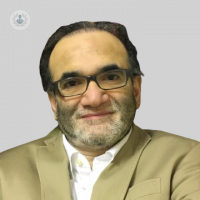Micrograft hair transplant
Dr Hamza Ahmed - Aesthetic medicine
Created on: 07-18-2014
Updated on: 10-23-2023
Edited by: Lauren Dempsey
What is a micrograft hair transplant?
A micrograft hair transplant or follicular transplant is an aesthetic technique for repopulating the scalp with hair in areas where there is alopecia or intense hair loss. Using the patient's own hair for a more natural result, it is performed under local anaesthesia. The main advantage of this treatment is that the patient is the donor and there is minimal scarring that is very easily concealed, even with very short hair.

Why is a micrograft hair transplant done?
Micrografting is very popular, especially among men who are balding or losing hair, women who experience intense hair loss, patients with alopecia, and patients who want to increase hair volume or cover sparsely populated areas in the beard, eyebrows, or genitals. Some patients who have undergone chemotherapy or radiotherapy treatment also go for this treatment after suffering hair loss.
What does micrograft hair transplant technique consist of?
Micrograft hair transplant is a microsurgery, a very simple intervention on a case-by-case basis requiring one or two sessions. Depending on the number of grafts that are being transplanted, the procedure will take between four and eight hours. There are several techniques for hair implants, but they consist of extracting hair follicles from populated areas to graft them in the area that needs more hair, obtaining a dense and natural appearance. The main techniques that are currently used are:
- FUE (follicular unit extraction): a very fine instrument called a punch is used to extract each individual hair follicle, leaving behind no linear scars.
- FUT (follicular unit transplantation): faster, with a greater survivability rate for the transplanted follicles, this technique extracts a thin, linear strip of follicles from the back or side of the scalp, which is then dissected to yield a number of individual grafts.
How can you prepare for a micrograft hair transplant?
The micrograft hair transplant does not require major preparation. A consultation with the specialist prior to the procedure will allow them to analyse the patient’s condition and plan the micrograft hair transplant. They may advise massaging your scalp before and suggest you stop taking certain types of medication, like beta-blockers or anti-inflammatory drugs.
Is a micrograft hair transplant painful?
It can be a painful procedure, but it varies from person to person. Most people experience pain when they are given the local anaesthetic, although the surgeon may freeze the area before to reduce the pain. The procedure isn’t usually painful.

What does recovery following a micrograft hair transplant entail?
Being a simple intervention performed with local anaesthesia, it does not necessarily require hospitalisation. The body should recognise the micrograft as its own tissue and shouldn’t reject the transplant. Scarring is minimal.
In the first few days after the procedure, you should use an antiseptic shampoo and avoid saunas, exercise, and sun exposure. The patient must come to the consultation 10 days after the intervention to have the stitches removed.
What are the disadvantages of micrograft hair transplants?
Like any operation, there is a risk of bleeding, infection, and/ or an allergic reaction to the anaesthesia used. There is a limit on the number of grafts that can be implanted during a single session and often it will require more than one procedure. There’s a small risk of the hair not taking and falling out and also scarring. Over time, the hair around the transplant may thin.
How much does micrograft hair transplant surgery cost?
The price can vary greatly, depending on the number of hair grafts and sessions that are required, both determined by the amount of hair loss that’s occurred. Generally, men require one to three sessions and the average cost in the UK ranges from £1,500 to £4,000.
What’s the best age to get a micrograft hair transplant?
Most experts recommend undergoing hair transplant surgery between the ages of 30 and 40, as this is normally when optimal results are achieved.
How many years does a hair transplant last?
A hair transplant, when performed correctly, should be permanent and last a lifetime. There is a very high success rate, between 90 to 95 per cent, of the graft taking and of the results lasting long-term.
Can you still go bald after a hair transplant?
Following micrograft hair transplant surgery, you will experience hair loss as your body gets used to the new hair follicles. This results in temporary hair loss in the second to eighth week following surgery, but after three months this side effect should subside. The results will be seen eight to twelve months following the surgery. The hair follicles that are implanted are stronger and unlikely to bald. Thinning over time is common.






